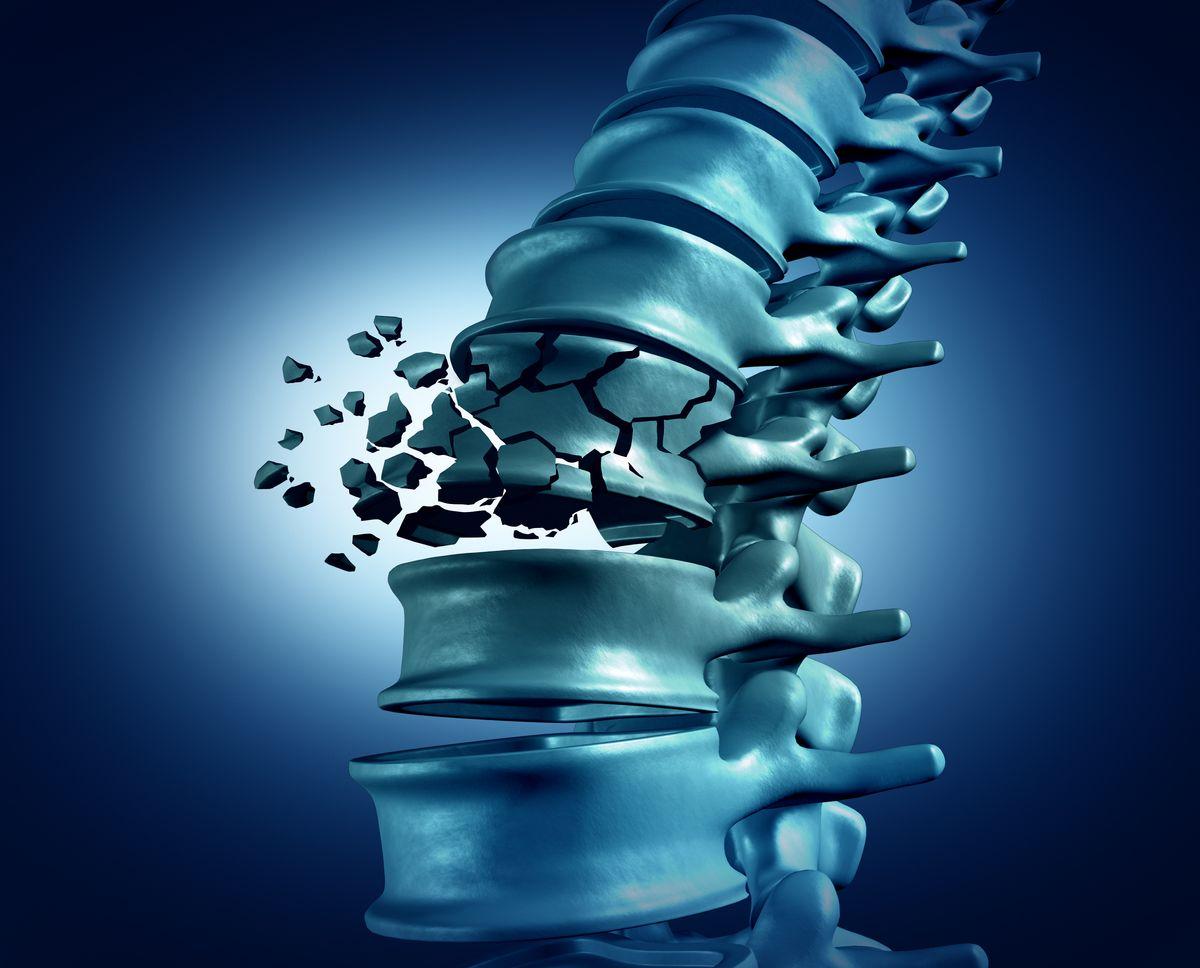OSTEOPOROSIS
Fast facts:
- Osteoporosis results from a loss of bone mass (measured as bone density) and from a change in bone structure. Many factors will raise your risk of developing osteoporosis and breaking a bone. You can change some of these risk factors, but not others. Recognizing your risk factors is important so you can take steps to prevent this condition or treat it before it becomes worse.
- Age is not the only risk factor for osteoporosis. Lifestyle choices, certain diseases and even medications can lead to this condition.
- A simple test known as a bone density scan, or DEXA, can give important information about your bone health.
- Newer medications can slow and even stop the progression of bones getting weaker, and can help decrease fracture risk.
Osteoporosis is a common condition. Bone is living tissue that is in a constant state of regeneration. The body removes old bone (called bone resorption) and replaces it with new bone (bone formation). By their mid-30s, most people begin to slowly lose more bone than can be replaced. As a result, bones become thinner and weaker in structure. This accelerates in women at the time of the menopause. In men bone loss usually becomes more of an issue around age 70.
Osteoporosis is silent because there are no symptoms (what you feel). Sometimes you might notice height lost by noticing your clothes are not fitting right. Other times it may come to your attention only after you break a bone. When you have this condition, a fracture can occur even after a minor injury, such as a fall. The most common fractures occur at the spine, wrist and hip. Spine and hip fractures, in particular, may lead to chronic (long-term) pain and disability, and even death. The main goal of treating osteoporosis is to prevent such fractures in the first place.
Because Osteoporosis is silent, the bone density test, or DEXA, has become of major importance. The DEXA scan can tell you if your bone is becoming osteoporotic.
Fortunately, you can take steps to reduce your risk of osteoporosis. By doing so, you can avoid the often-disabling broken bones (fractures) that can result from this condition. If you already have osteoporosis, new medications are available to slow or even stop the bones from getting weaker. These medicines also can decrease the chance of having a fracture.
What causes osteoporosis?
Osteoporosis results from a loss of bone mass (measured as bone density) and from a change in bone structure. Many factors will raise your risk of developing osteoporosis and breaking a bone. You can change some of these risk factors, but not others. Recognizing your risk factors is important so you can take steps to prevent this condition or treat it before it becomes worse.
Major risk factors that you cannot change include:
- Advancing age, menopause
- Non-Hispanic white or Asian ethnic background
- Small bone structure
- Parents you have broken their hips
- Prior fracture due to a low-level injury, particularly after age 50
Risk factors that you may be able to change include:
- Low levels of sex hormone, mainly estrogen in women (e.g., menopause)
- The eating disorders anorexia nervosa and bulimia
- Cigarette smoking
- Alcohol abuse
- Low calcium and vitamin D, from low intake in your diet starting during your teens and 20’s or inadequate absorption in your gut
- Sedentary (inactive) lifestyle or immobility
- Certain medications, including the following:
- glucocorticoid medications (also called corticosteroids), such as prednisone (brand names: Deltasone, Orasone, etc.) or prednisolone (Prelone); see fact sheet on glucocorticoid-induced osteoporosis
- excess thyroid hormone replacement in those taking medications for low thyroid or hypothyroidism
- heparin, a commonly-used blood thinner
- some treatments that deplete sex hormones, such as anastrozole (Arimidex) and letrozole (Femara) to treat breast cancer or leuprorelin (Lupron) to treat prostate cancer and other health problems
- Diseases that can affect bones
- endocrine (hormone) diseases (hyperthyroidism, hyperparathyroidism, Cushing’s disease, etc.)
inflammatory arthritis (rheumatoid arthritis, ankylosing spondylitis, etc.)
Who gets osteoporosis?
Osteoporosis is more common in older women, mainly non-Hispanic white and Asian women. Yet it can occur at any age, in men as well as women, and in all ethnic groups. People over age 50 are at greatest risk of developing osteoporosis and having related fractures. Over age 50, one in two women and one in six men will suffer an osteoporosis-related fracture at some point in their lives. In the U.S., about 4.5 million women and 0.8 million men over the age of 50 have osteoporosis.
However, another 22.7 million women and 11.8 million men over age 50 have low bone mass (known as osteopenia). People with low bone mass are also at higher risk of fractures, but it is not as high as for people with osteoporosis. If bone loss continues, people with osteopenia can become osteoporotic.
How is osteoporosis diagnosed?
You can learn if you have osteoporosis by having a simple test that measures bone mineral density—sometimes called BMD. BMD —the amount of bone you have in a given area—is measured at different parts of your body. Often the measurements are at your spine and your hip, including a part of the hip called the femoral neck, at the top of the thigh bone (femur). Dual energy X-ray absorptiometry (referred to as DXA or DEXA and pronounced “dex-uh”) is the best current test to measure BMD.
The test is quick and painless. It is similar to an X-ray, but uses much less radiation. Even so, pregnant women should not have this test, to avoid any risk of harming the fetus. DXA test results are scored compared with the BMD of young, healthy people.
How is osteoporosis treated?
If you have osteoporosis, your health care provider will advise the following:
- Calcium. Make sure you are getting enough calcium in your diet or you might need to consider taking supplements. The National Osteoporosis Foundation recommends 1,000 milligrams (shortened as mg) per day for most adults and 1,200 mg per day for women over age 50 or men over age 70.
- Vitamin D. Get adequate amounts of vitamin D, which is important to help your body absorb calcium from foods you eat. The recommended daily dose is 400–800 International Units (called IU) for adults younger than age 50, and 800–1,000 IU for those age 50 and older. (These are the current guidelines from the National Osteoporosis Foundation.) You may need a different dose depending on your blood level of vitamin D, sometimes as high as 50,000 units a week for 12 weeks.
- Physical activity. Get exercise most days, especially weight-bearing exercise, such as walking.
Most people with Osteoporosis or High FRAX scores will also need medication. A number of medications are available for the prevention and/or treatment (“management”) of osteoporosis.
Preventing osteoporosis
Lifestyle changes may be the best way of preventing osteoporosis. Here are some tips:
- Make sure you get enough calcium in your diet or through supplements (roughly 1,000–1,200 mg/day, but will depend on your age).
- Get enough vitamin D (400–1,000 IU/day, depending on your age and your blood level of vitamin D measured by your doctor).
- Stop smoking.
- Avoid excess alcohol intake: no more than two or three drinks a day.
- Be physically active and do weight-bearing exercises, like walking, most days each week. Aim for at least 2½ hours a week (30 minutes a day five times a week or 50 minutes a day three times a week), or as much as you can. Exercises that can improve balance, such as Tai Chi or yoga, may help prevent falls.
- Change lifestyle choices that raise your risk of osteoporosis.
- Implement strategies to help decrease your risk of falling.
You also should get treatment for any underlying medical problem that can cause osteoporosis. If you are on a medication that can cause osteoporosis, ask your doctor if you can lower the dose or take another type of medicine. Never change the dose or stop taking any medicine without speaking to your doctor first.
If you are at severe risk because of medication you have to take, then some of the above mentioned treatments might be appropriate for you.
Living with osteoporosis
As doctors who are experts in diagnosing and treating diseases of the joints, muscles and bones, rheumatologists can help find the cause of osteoporosis. They can provide and monitor the best treatments for this condition.
The most serious health consequence of osteoporosis is a fracture. Spine and hip fractures especially may lead to chronic pain, long-term disability and even death. The main goal of treating osteoporosis is to prevent fractures. If you have osteoporosis, it is important to help prevent not just further bone loss but also a fracture. Here are some ways to decrease your chance of falls:
- Use a walking aid. If you are unsteady, use a cane or walker.
- Remove hazards in the home. Remove throw rugs. Also, remove or secure loose wires or cables that may make you trip. Add nightlights in the hallways leading to the bathroom. Install grab bars in the bathroom and non skid mats near sinks and the tub.
- Get help carrying or lifting heavy items. If you are not careful, you could fall, or even suffer a spine fracture without falling.
- Wear sturdy shoes with soles that grip. This is above all true in winter or when it rains.
For more information
The American College of Rheumatology compiled this list to give you a starting point for your own additional research. The ACR does not endorse or maintain these websites, and is not responsible for any information or claims provided on them. It is always best to talk with your rheumatologist for more information and before making any decisions about your care.
National Osteoporosis Foundation
National Institutes of Health Osteoporosis and Related Bone Diseases National Resource Center
Updated March 2019 by Isabelle Amigues, MD, and reviewed by the American College of Rheumatology Committee on Communications and Marketing.
This information is provided for general education only. Individuals should consult a qualified health care provider for professional medical advice, diagnosis and treatment of a medical or health condition

